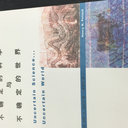Alleviation of Mechanical Allodynia by 14,15-Epoxyeicosatrienoic Acid in a Central Poststroke Pain Model: Possible Role of Allopregnanolone and δ-Subunit-Containing Gamma-Aminobutyric Acid A Receptors.
Palabras clave
Abstracto
Central poststroke pain (CPSP) is a neuropathic pain syndrome arising after a lesion of the central nervous system owing to cerebrovascular insult. Impaired daily activities and reduced quality of life in people suffering from CPSP justify the need for improved treatment. The detailed mechanism of CPSP is not well understood, but central disinhibition has been suggested. Recent reports indicated that epoxyeicosatrienoic acids (EETs), the cytochrome P450 metabolites of arachidonic acid, promoted neuronal survival after stroke, displayed antinociception in peripheral inflammatory pain, and reduced neuronal excitability in seizure model. Here, we tested the hypothesis that 14,15-EET may attenuate CPSP by suppressing thalamic disinhibition through neurosteroids-δ-subunit-containing gamma-aminobutyric acid A receptors (δGABAAR) signaling. In this study, we used a rat model of thalamic hemorrhagic stroke to induce CPSP. Pain behavioral tests revealed that CPSP rats exhibited mechanical allodynia, starting at day 7 postlesion and lasting at least 4 weeks. Analysis of the perithalamic lesion tissue from the brain of CPSP rats demonstrated a decrease of 14,15-EET content, steroidogenic acute regulatory protein expression, and allopregnanolone (AP) production. This was accompanied by reduced δGABAAR expression in the medial thalamus at 4 weeks postlesion. Intrathalamic injection of exogenous 14,15-EET into the ventral posterior lateral nucleus attenuated mechanical allodynia, induced a marked increase in the abundance of the steroidogenic acute regulatory protein and AP along the lesion site and a concomitant increase in δGABAAR expression in the medial thalamus under CPSP condition. However, this antinociceptive effect could be eliminated by the 5α-reductase inhibitor finasteride or dutasteride or GABAAR antagonist bicuculline. Moreover, compared with the current first-line drug gabapentin for central neuropathic pain, an early treatment of EET showed greater efficacy in the secondary prevention of CPSP. Taken together, this study provided a proof of concept that EETs may have anti-CPSP effect by reserving normal thalamic inhibition through AP-δGABAAR signaling. PERSPECTIVE: Agents targeting EETs may serve as potential therapeutic options for stroke, the use of which at the initial period could not only block further nerve damage but also prevent the occurrence of CPSP.





